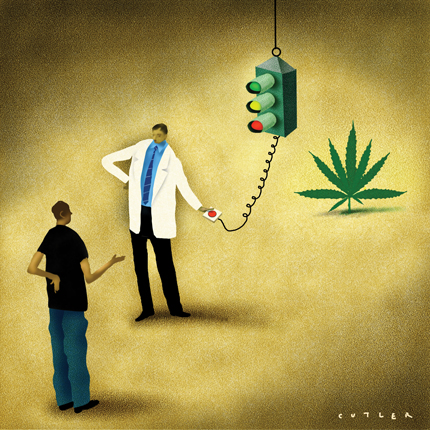Would Congress cut funding for popular health care programs?
A serious bi-partisan discussion is needed to make serious decisions about health care reform.
For the past decade, from Medicare Part D to the Economic Recovery Act to the Affordable Care Act (ACA), the federal government has dumped hundreds of billions of dollars into health care.
Now, if the politicians are to be believed, the country is entering a period of fiscal austerity. Most Republicans are running on a platform of cutting non-defense spending and repealing the ACA. Democrats, too, have said that they will tighten the belt.
But the politicians haven't leveled with the American people on two inarguable truths. The first is that federal spending on health care will continue to increase and consume a larger share of the budget. The second is that reducing health care funding will require cuts in highly effective programs that have broad public support.
Start with spending on Medicare and Medicaid. Over the next decade, Medicare enrollment will grow by 15 million people. They will need more care and more services, but such mandatory spending will put enormous pressure on the federal budget. Yet, politicians don't tell voters that they will have to cut Medicare benefits and eligibility and pay clinicians less.
While the ACA makes some cuts in Medicare, mainly reducing payments to hospitals and Medicare Advantage plans, it also lowers prescription drug co-pays under Medicare Part D, completely eliminates out-of-pocket expenses for covered preventive services, and raises payments by 10% for many primary care services by general internists, family physicians and geriatricians. Will politicians now vote to increase how much seniors have to pay for prescription drugs and cancer screening tests? Will they tell primary care physicians that they are taking away the 10% bonus?
Both parties will also have to deal with the accumulated budget cost of Medicare's flawed sustainable growth rate (SGR). Budget analysts say that it will cost well over $200 billion over the next decade to eliminate all of the scheduled SGR cuts to physicians.
The ACA also increases federal spending on Medicaid. Initially, the federal government will pay states 100% of the cost of expanding coverage to people who earn less than 133% of the Federal Poverty Level. A more conservative Congress could try to eliminate the expansion, as many Republicans have pledged to do. But any such change would likely require 60 votes in the Senate, and President Obama would likely veto it. It is almost impossible, then, to imagine that Congress will be able to repeal or defund the Medicaid expansion, certainly not as long as Mr. Obama is in the White House.
What if repeal succeeded? The growing number of people who look to Medicaid for help would still need health care. One way or another, the federal government would end up paying for much of it, mainly by shifting costs to other programs and paying hospitals more for indigent care. The states would have to pick up a bigger share of the tab.
The ACA also expands coverage by providing tax credits for individuals and small businesses to buy coverage. Repeal of the tax credits, though, will face the same kind of political hurdles as repeal of the Medicaid expansion. And repealing both the Medicaid expansion and the tax credits would put affordable coverage out of reach for the more than 30 million people expected to get coverage under the ACA.
Congress could look to save money in discretionary health programs, but this too is easier said than done. Agencies funded principally by discretionary dollars include the Department of Veterans Affairs, the National Institutes of Health, the Food and Drug Administration, the Agency for Healthcare Research and Quality, the Centers for Disease Control and Prevention and many more that have a direct impact on the health of the country. Also subject to annual appropriations are dozens of programs authorized by the ACA to promote worksite prevention and wellness, provide scholarships and loan forgiveness to primary care physicians in underserved communities, and improve health care delivery and outcomes.
Congress may try to reduce funding for many of them. But most of these programs have broad support among physicians, employers, patient and public health advocacy groups and the general public. Reducing funding would also place at risk investments in such critical tasks as training more primary care physicians to meet the growing patient demand. Such discretionary programs also represent a relatively small portion of total federal spending.
None of this is intended to argue with the basic premise that the budget deficit needs to be brought under control.
On the discretionary side, some beneficial programs that in the past enjoyed a big infusion of federal dollars may have to get along with less money. Programs with an uncertain track record and no strong advocates will be the most vulnerable.
On the entitlement side, Medicare's and Medicaid's benefits, financing and eligibility will need to be restructured to ensure their continued viability and to reduce the cost to the federal budget. Both, though, will likely remain the principal source of coverage for many tens of millions of people. Health care costs also will need to be brought down, since higher health care spending means higher spending on Medicare, Medicaid, the Department of Veterans Affairs, the Children's Health Insurance Program, and also higher tax credit subsidies to help people afford coverage. Taxes will need to be examined to ensure that there is enough money coming in to cover the money going out on the programs the public wants.
We need a serious conversation about serious choices. What we don't need are facile promises by conservative politicians who say they can cut spending without saying how or who will be affected, or by liberal politicians who promise to keep the spigot flowing without saying how the country can afford it.




